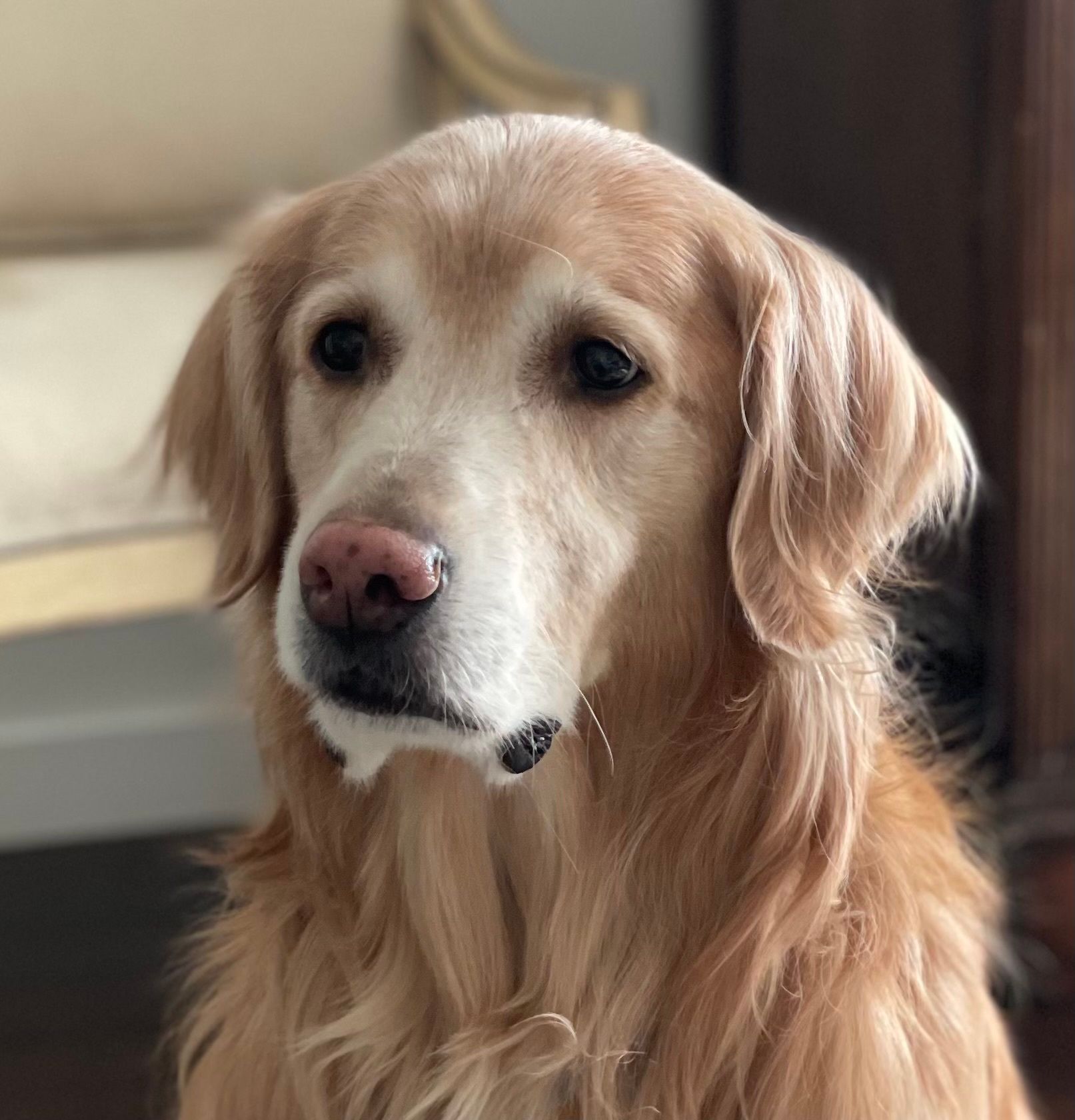Splenic Hemangiosarcoma Case Study: Pita
With a combination approach that included FidoCure® therapy, Pita lived for a year following a hemoabdomen and diagnosis of splenic hemangiosarcoma.
History and Initial Therapy
Pita Cosmatos, a 9-year-old male neutered Papillon mix, was seen in June 2021 for an acute onset of lethargy. Abdominal ultrasound showed a hemoabdomen and 5 cm mass in the mid-body of the spleen. Pita had a splenectomy performed, and histopathology was diagnostic for hemangiosarcoma. At that time, tissue was submitted for FidoCureⓇ analysis. While awaiting sequencing results, he started on a course of Doxorubicin.
FidoCure Analysis
Genomic analysis of Pita’s tumor revealed 6 mutations. Three of these were felt to be potential therapeutic targets: CDKN2A, P53, and PIK3CA. HNF1A is a transcription factor required for the expression of several liver-specific genes, and its clinical significance is unknown.
CDKN2A, or cyclin-dependent kinase inhibitor 2A, encodes for two proteins, p16(Ink4a) and p14(ARF), involved in cell cycle regulation. Under normal circumstances, these proteins lead to inhibition of CDK4 and CDK6 by preventing their binding to cyclins. This activates the retinoblastoma (Rb) family of proteins, which blocks the G1 to S-phase transition and can result in cell cycle arrest or quiescence. p16(ARF) is an inhibitor of MDM2 and enhances p53 activity and cell apoptosis. Mutations causing loss of function or oncogenic mutations may predict sensitivity to CDK4/6 inhibitors.
TP53 encodes a protein called tumor protein p53 which has become one of the most well published tumor suppressor genes in human and canine cancer. This protein helps to regulate cell growth and damaged cells by controlling signals for pausing the cell cycle and cell death.
PIK3CA is the gene which encodes the protein p110⍺, with is one subunit of PIK3 (phosphatidylinositol 4,5-bisphosphate 3-kinase) enzyme. P110α protein is called the catalytic subunit because it performs the action of PI3K. PIK3CA is a well documented oncogene that plays a critical role in the PI3K/AKT pathway. When stimulated, PI3K-110α converts its substrate PIP2 into PIP3 subsequently activating several signaling cascades, including AKT-mTOR pathway. Once activated, AKT-mTOR downstream signaling promotes cell survival, proliferation, growth and motility. PIK3CA is the most frequent activating mutation in canine hemangiosarcoma (46% of cases). Interesting, most of the tumors bearing PIK3CA mutations also had inactivating TP53 mutations.
FidoCure Treatment
Based on the FidoCure recommendations, Pita was started on Rapamycin at a dose of 0.1 mg/kg/day in August 2021 after receiving his first two Doxorubicin treatments. He tolerated the combination of therapy very well with no metastasis noted on restaging diagnostics during this treatment.
Upon completion of his course of Doxorubicin, it was elected to combine Rapamycin with Vorinostat. This was started in December 2021 at a dose of 22.5 mg/kg every other day. After receiving this therapy combination for 2 months, restaging diagnostics were performed in February 2022. There was no evidence of metastatic disease.
Pita continued to do well until his recheck in June 2022 (one year after initial diagnosis). He presented with concerns of respiratory changes and a picky appetite. On exam, his gums were pale, and a distended abdomen was noted. Pita was switched to Palbociclib at a dose of 0.275 mg/kg/day to try and better control his disease. This therapy was continued for almost two weeks until Pita’s quality of life deteriorated, and humane euthanasia was elected.
Conclusion
On a combined treatment plan that included traditional therapy and FidoCure guided targeted therapy, Pita has done well for a year following a hemoabdomen and diagnosis of splenic hemangiosarcoma. This is longer than the historical survival time reported for patients treated with splenectomy and IV chemotherapy. Survival of a year is also remarkable in this patient given the presence of the PIK3CA mutation, which has been shown to carry a poor prognosis.
What Pita’s Oncologist Says:
“Pita survived just about 1 year from his diagnosis, which was very impressive indeed. I would say it was wonderful to have an additional adjuvant therapy that he tolerated extremely well and kept his disease at bay for so much longer than what we see for the average patient treated with traditional therapy alone. “

What Pita’s Pet Parents Say:
“Overall we are heartbroken that this happened to him particularly as he otherwise had more years ahead of him. We are however very grateful for the “extra” year of near normal life he got after the diagnosis and are aware that is about double the expectancy for these kind of cases. He then beat the odds again and was with us with a decent quality of life up to the very end for nearly 3 weeks from the verge of being put to sleep.
We feel all his treatments contributed to this including Fidocure targeted therapy, particularly over the last 6 months after he had finished the chemotherapy. Identifying targetable mutations is a big step in the right direction to improving outcomes. I hope Fidocure continues to advance this work and derive protocols with chemo and/or checkpoint blockade to get even better results.”


